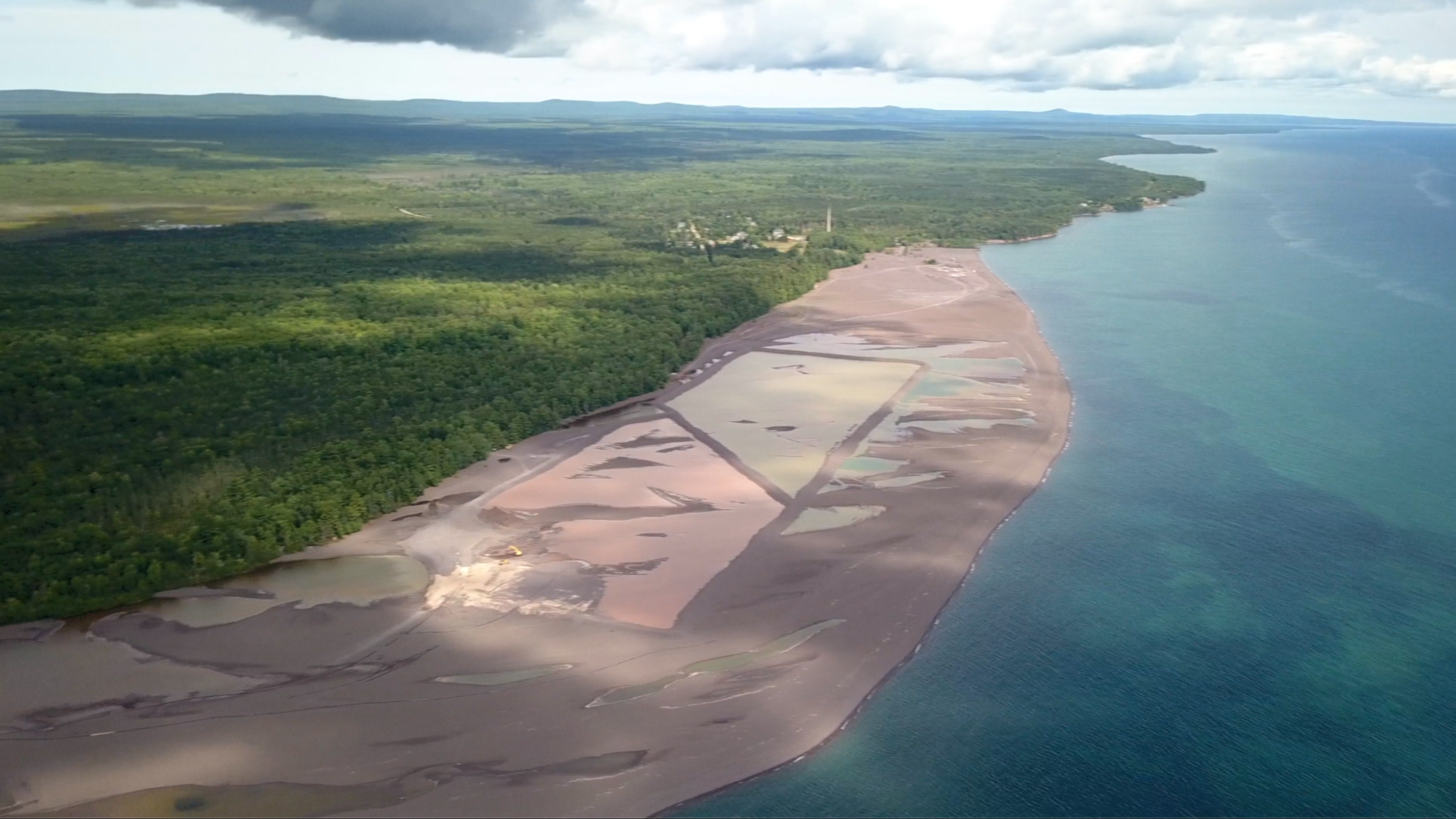
GAY, Mich. (AP) — Crews were expected to start removing more copper mining waste rock known as stamp sands that have built up in an Upper Peninsula waterway and threaten an important fish spawning area, according to state officials.
Dredging in Grand Traverse Harbor started the previous week and is part of a wider strategy to help protect the spawning habitat for Lake Superior whitefish and lake trout, the Michigan Department of Natural Resources said in a news release.
Stamp sands were dumped along the Lake Superior lakefront during the early 20th century in Gay, northwest of Marquette. The stamp sands cover 1,400 acres (570 hectares) of shoreline and lake bottom and are drifting toward Buffalo Reef.
Workers cleared the harbor during the summer of dark-colored stamp sands, but late-season fall storms and high-water levels on Lake Superior are causing the stamp sands to again choke the harbor, the DNR said.
“Sands will be removed from the harbor and also from the beach, up to 1,000 feet (300 meters) north of the breakwater, to help keep the harbor open,” said Jay Parent, district supervisor of the Michigan Department of Environment, Great Lakes and Energy’s Water Resources Division in Marquette. “We want camp and homeowners along the beach to know we will be doing this work over the winter months so as not to interfere with summer camp use.”
In addition to earlier dredging, crews have worked to move the stamp sand pile at the original deposit site back from the shoreline at Gay.
“These efforts were undertaken to help cut off the supply of stamp sands feeding down the lakeshore toward the harbor,” Parent said.
A multi-agency task force also is continuing to develop options for a long-term solution to the problem, “hoping to save the important fish habitat associated with the reef,” Parent added.
The U.S. Environmental Protection Agency said this year it would spend $3.7 million to remove stamp sands through the Great Lakes Restoration Initiative, a program that focuses on longstanding environmental problems in the region. The state of Michigan was to contribute $3 million.
“Anything we do now to remove stamp sands from the beach and harbor will help reduce the threat to Buffalo Reef, overall,” said John Pepin, a Michigan DNR spokesman. “Meanwhile, the Buffalo Reef Task Force is evaluating options to reduce the amount of short-term dredging required, while refining estimates of how much dredging will be needed moving forward.”
Watch Great Lakes Now’s segment on the stamp sands threat to Buffalo Reef and the restoration work on it:
API key not valid. Please pass a valid API key.1 Comment
-
When is the last time Whitefish Point, MI was dredged? Is it on a periodic schedule for dredgeing?




